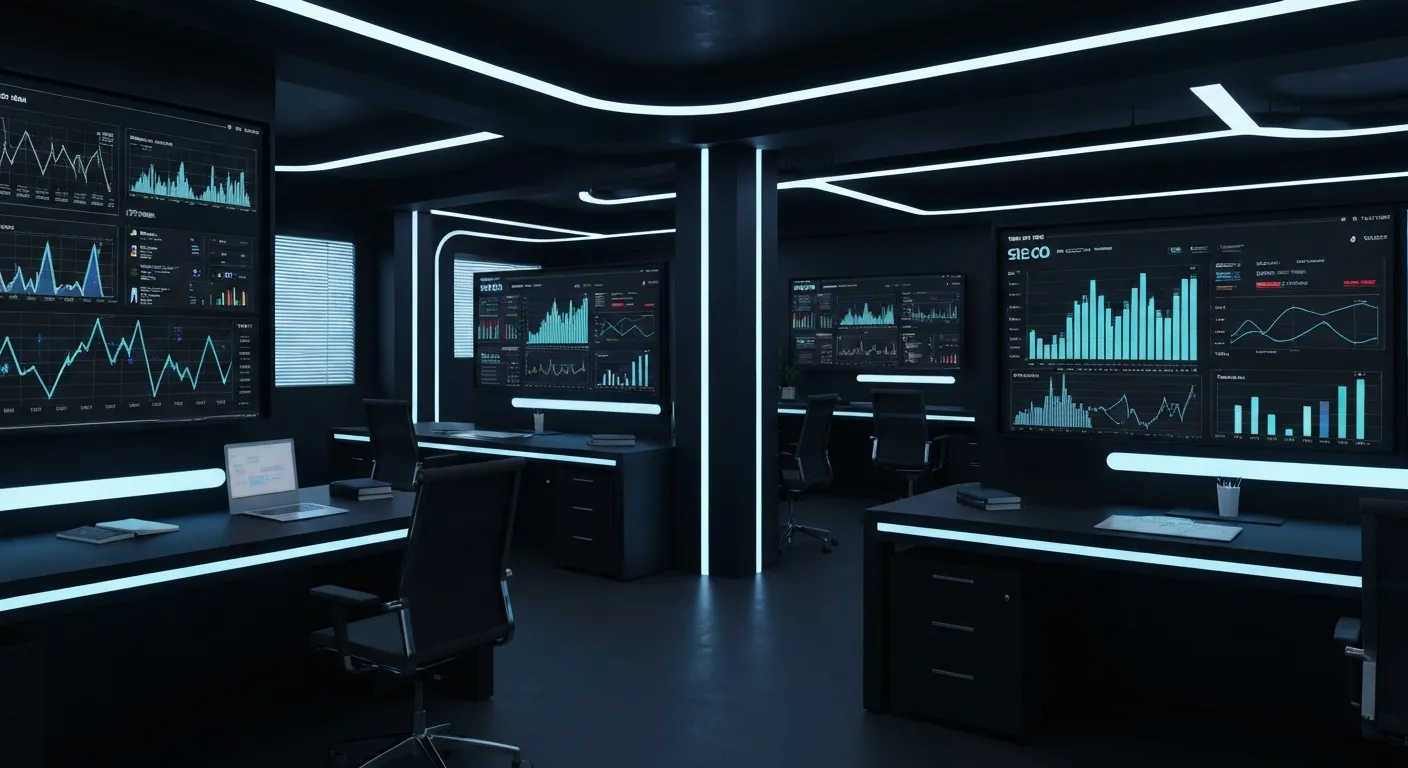AI Tools to Create Engaging Video Content Hidden Behind the Scenes
Unveiling the AI Revolution Transforming Video Content Creation

Introduction to AI in Video Production
The world of video content creation is undergoing a profound transformation powered by artificial intelligence. Beyond the polished videos audiences see, an intricate web of AI-driven tools and technologies operate behind the scenes to simplify, enhance, and accelerate the production process. From script generation and faceless video creation to real-time editing and advanced visual effects, AI is democratizing video content production, enabling creators at all skill levels to produce engaging and professional-quality videos quicker and more affordably than ever. This narrative explores the comprehensive landscape of AI tools that underpin this revolution, dissecting their features, applications, technical foundations, and the value they bring to marketing, enterprise, and creative sectors alike.
Generate Videos from Text for FREE with AI – No Catch
Discover the power of text-to-video AI tools that allow you to create engaging visual content effortlessly. Watch this tutorial to learn how ...
Core Features and Functionalities of AI-Driven Video Creation Platforms
AI video creation platforms have transformed content production by offering a suite of powerful features that automate many traditionally time-consuming tasks.
A primary capability is text-to-video and image-to-video conversion, allowing users to generate videos directly from prompts or static images. This means creating a full video narrative or animation simply by describing the scene, significantly speeding up the creative process.
Beyond creation, these platforms excel in automated editing and customizable templates. They provide pre-designed structures that users can adapt easily, reducing the need for extensive editing skills and equipment.
A standout feature is AI-generated voiceovers and lip-syncing. These tools can produce realistic narration in multiple languages, synchronizing speech accurately with visual elements. Many platforms also support virtual avatars, enabling the creation of realistic characters that can deliver scripts without human actors.
Scene control tools, such as background removal, motion tracking, and dynamic camera angles, give creators precise control over the visual presentation. Advanced features like background removal facilitate clean, professional-looking videos, while motion tracking helps keep subjects in focus even with complex movements.
For social media and branding, AI platforms incorporate social media optimization tools, including auto-resizing, branded templates, and content tagging. These features ensure videos are tailored for different platforms, enhancing engagement.
Some platforms enable content repurposing by transforming long-form videos into short clips or extracting highlights to maximize reach and value.
Most importantly, these tools contribute to reduction in production time and costs. By automating many editing and generation tasks, they allow creators—from individuals to large organizations—to produce high-quality videos rapidly and affordably.
Looking ahead, the features set to define AI video platforms in 2025 include even more realistic avatars, multi-language capabilities, and seamless integration with other digital tools, making video creation more accessible and versatile than ever.
Faceless and Automated Video Production: How AI Makes It Possible
How do AI tools facilitate the production of engaging, faceless, or automated videos?
AI technology has revolutionized video creation by making it faster, more flexible, and accessible for everyone. Tools like InVideo AI, Canva’s 'Create a Video Clip', and others provide a comprehensive suite of features that simplify the process.
These platforms can automatically generate scripts based on prompts and add relevant media from vast libraries of licensed images, videos, and animations. This allows creators to produce diverse content—such as travel, food, health, and education videos—without appearing on camera.
One of the most significant advantages is the use of AI avatars and multilingual voiceovers. For example, Synthesia and HeyGen enable users to create realistic digital actors that can speak in over 40 languages, delivering scripts naturally and engaging viewers without personal filming.
By offering workflows that streamline prompt structuring, video editing, and scene adjustments, these tools eliminate the need for complex timelines and advanced editing skills. This makes video production accessible to users with varying expertise levels and resources. Tools like Adobe Premiere Pro AI features and Descript transcript-based video editing further enhance editing efficiency for creators.
Moreover, the ability to create faceless videos helps with privacy concerns, especially for those who prefer to keep their identity hidden or are working in sensitive contexts. AI-driven automation helps maintain consistency and quality, saving countless hours traditionally spent on editing and post-production, as discussed in Faceless AI video tools.
Balancing automation with personal engagement is essential. While AI handles much of the content creation, combining it with human oversight ensures the videos remain authentic and aligned with brand goals.
As AI video tools continue to evolve, considerations around privacy, safety, and compliance are paramount. Most platforms now include measures to ensure data security, proper licensing, and adherence to AI policies, helping creators produce impactful and responsible content. For more on these aspects, see AI video generation techniques and ethical considerations.
Practical Applications and Use Cases of AI in Video Content Development
AI technology has profoundly transformed how video content is created, refined, and delivered across various industries. One of its primary roles involves automating essential tasks such as editing, scriptwriting, and voiceovers, which previously required extensive manual effort. For example, AI-powered tools can generate scripts from prompts, select the best video clips, and even produce realistic voiceovers in multiple languages, substantially reducing production time and expenses (AI video production time reduction, AI video editing, AI video script generation).
Beyond automation, AI enables personalized and interactive video experiences. Creators can develop tailored content that adapts to viewer preferences, incorporate real-time subtitles in numerous languages, and modify videos dynamically based on audience engagement metrics. This capability broadens global accessibility and enhances viewer involvement (AI video editing software, AI avatars and voiceovers).
In sectors like marketing, education, and entertainment, AI facilitates the rapid generation of diverse content formats. Marketers utilize AI to produce promotional videos with virtual avatars and customized visuals. Educational platforms leverage AI to create engaging tutorials, onboarding videos, and tutorials with AI avatars supporting multiple languages. The entertainment industry benefits from AI-driven creation of stylized visuals, music, and virtual characters, making content more immersive (Best AI Video Generator 2024, Synthesia AI Video Platform, Luma Dream Machine video quality).
Furthermore, AI optimizes video performance by analyzing viewer data and providing actionable insights. Content creators and businesses can improve their strategies through recommendations to enhance engagement, retention, and reach (AI reduces video creation time and costs).
Despite its numerous benefits, employing AI in video development also raises ethical and legal considerations. Transparency about AI usage, safeguarding creators' rights, and preventing misuse such as deepfakes or unauthorized content generation are vital. Ensuring responsible AI practices upholds trust and aligns with legal standards (Faceless AI video tools, AI content moderation in Canva).
In summary, AI serves as a versatile facilitator in video creation, offering automation, personalization, localization, and performance enhancement. Its responsible application promises even greater innovations, making high-quality video content more accessible and engaging worldwide (Best AI video generators 2025, Google Veo 3 video creation features).
Transforming Scripts, Text Prompts, and Images into Videos with AI
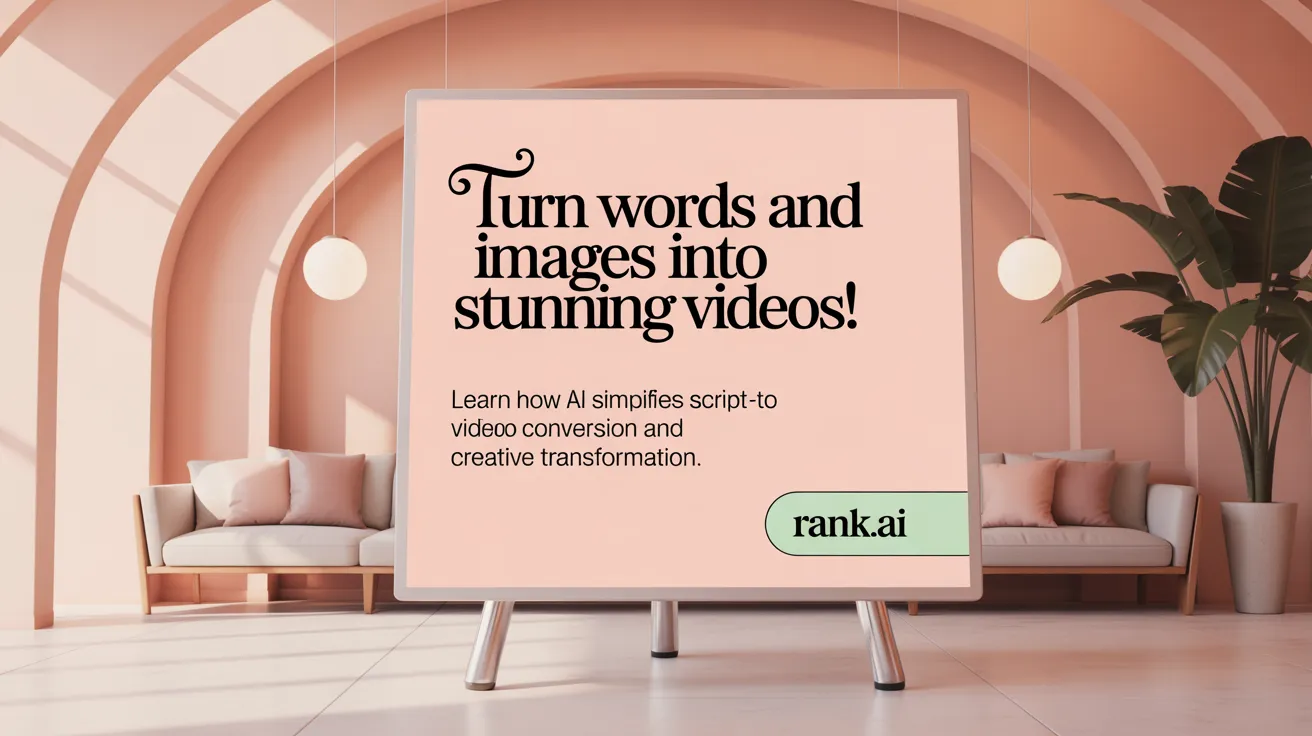
AI tools excel at turning scripts, text prompts, or images into engaging videos through cutting-edge natural language processing and image recognition technologies. For example, platforms like HeyGen interactive avatars allow users to input a script or prompt and then generate a complete video, including voiceovers, background music, scene transitions, and overlay text. These AI-driven solutions can create highly realistic avatars from personal photos or videos, capable of lip-syncing in over 175 languages, thus supporting multilingual AI video support.
Translation and localization are further enhanced by AI, enabling seamless video adaptation for different languages and regions. Voice cloning technology allows the replication of specific voices, making automated narration sound natural and personalized, as seen in InVideo voice cloning.
User-friendly interfaces and accessible API integrations reduce complexity, helping creators produce videos at scale while maintaining security and workflow flexibility. These features empower industries like marketing, education, and entertainment to generate dynamic, customized videos efficiently. Overall, AI facilitates a streamlined and versatile approach to video production, transforming simple inputs into professional multimedia content.
Comparative Overview of Leading AI Video Generation and Editing Software
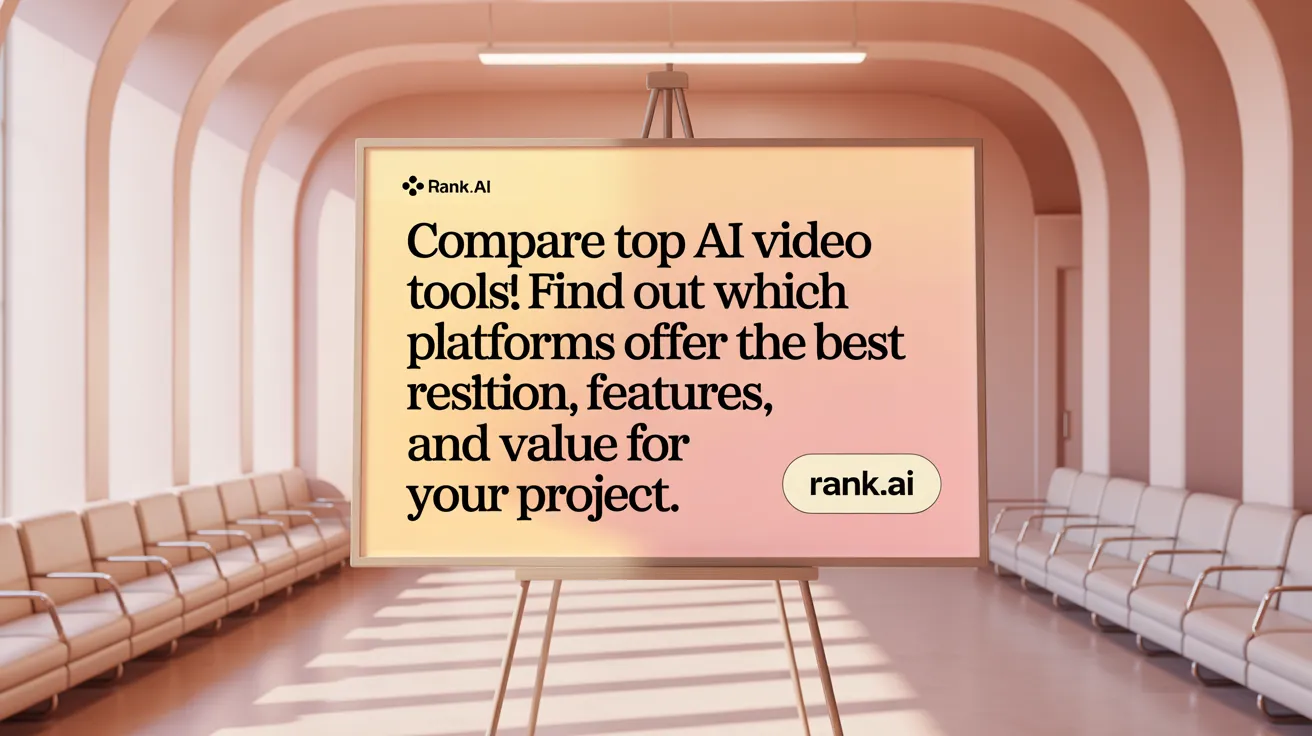
How do AI tools compare in terms of video generation and editing capabilities?
AI tools in the video industry offer a broad spectrum of features, tailored for different production needs. Platforms like Kling AI video capabilities and Runway Gen 4 features stand out for their ability to generate high-resolution videos—up to 1080p or even 4K—with capabilities such as text-to-video conversion, camera controls, and lip synchronization. Runway’s Gen 4 model supports extended shot lengths, moving beyond simple clips to more complex sequences.
InVideo and Elai.io are geared toward marketers and educators, offering extensive templates, stock media, and multimedia options that simplify content creation. They also integrate features like voiceovers in multiple languages and automated editing, making them accessible for users with limited technical skill.
Specialized tools such as Synthesia digital avatars and languages and DeepBrain.AI corporate videos focus on creating hyper-realistic AI avatars that can speak in diverse languages, making them ideal for corporate training, virtual events, and customer service applications. Adobe Firefly emphasizes speed, producing cinematic-quality clips from simple prompts, perfect for quick storyboarding or visual effects.
Resolution options vary, with most leading tools supporting 1080p as standard, while Google Veo 2 4K video generator and other high-end platforms push into 4K territory. Pricing models are equally diverse; some tools like Pika and Vidu offer affordable monthly subscriptions (around $8 to $35), with free trials or limited free tiers to attract new users.
While many AI video tools excel at automating tasks like cutting, level timing, and adding backgrounds, the trade-off often lies in the level of manual control. Easy-to-use platforms may produce less customized outputs, whereas more advanced systems offer detailed scene management but require greater familiarity.
Ultimately, the best software depends on your project's scope—whether that’s quick social media clips, detailed animations, or professional corporate videos—and your willingness to balance accessibility versus creative control. As the market expands at a CAGR of nearly 20%, ongoing innovations promise even more sophisticated, user-friendly AI video tools in the near future.
Choosing the Right AI Video Creation Tool: Key Considerations
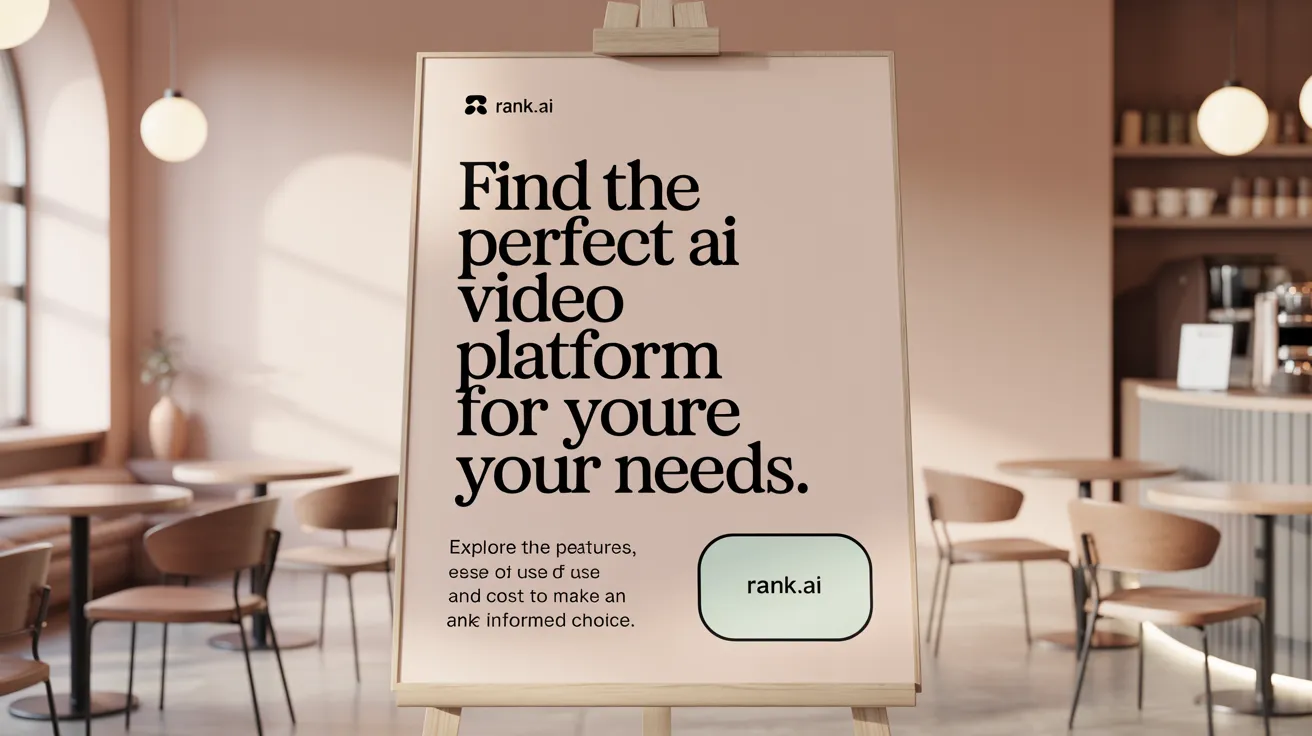
Selecting the ideal AI video creation platform involves assessing several important factors to match your specific content needs and budget.
One of the primary aspects to consider is feature set. Look for tools offering realistic AI avatars, which can speak in natural and expressive text-to-speech (TTS), as well as editing capabilities like captioning, scene transitions, and sound design. Platforms such as Synthesia and HeyGen excel in avatar realism, while InVideo and Canva provide versatile editing features suitable for broader applications.
Ease of use is equally crucial. User-friendly interfaces and customizable templates can significantly reduce the learning curve. For example, Canva simplifies video creation with intuitive prompts, making it accessible for non-experts. Advanced users may prefer tools with more control, like Runway or Pictory, which support detailed scene editing and iterative content development.
Pricing models vary widely, from free trials and basic plans to subscription-based services costing $8 to $120+ per month. It’s important to consider not only upfront costs but also licensing rights—especially for commercial projects. Many tools support unlimited use within the scope of a paid plan, while free versions might have output limitations. For detailed pricing and licensing info, see AI Video Generator Pricing.
Workflow integration and platform compatibility should not be overlooked. Tools like Google Vids or Adobe Premiere Pro integrate seamlessly with existing editing and collaboration ecosystems, streamlining production. Compatibility with social media platforms and content management systems ensures easy sharing and distribution.
Moreover, consider your content style, length, and branding needs. If you require highly stylized or branded videos, opt for tools offering extensive customization or scalable templates. For quick test content or shorter videos, lightweight solutions like Vidu or Captions could suffice.
Customer support and community resources also matter. Platforms with active user communities, tutorials, and responsive support—such as Synthesia or InVideo—can facilitate smoother onboarding and troubleshooting.
In summary, when choosing an AI video tool, evaluate the range of features, usability, cost, integration capabilities, and support options. Matching these factors with your specific production goals will help you select the platform best suited to produce engaging, professional videos efficiently.
Technical Foundations of AI Video Editing, Enhancement, and Automation
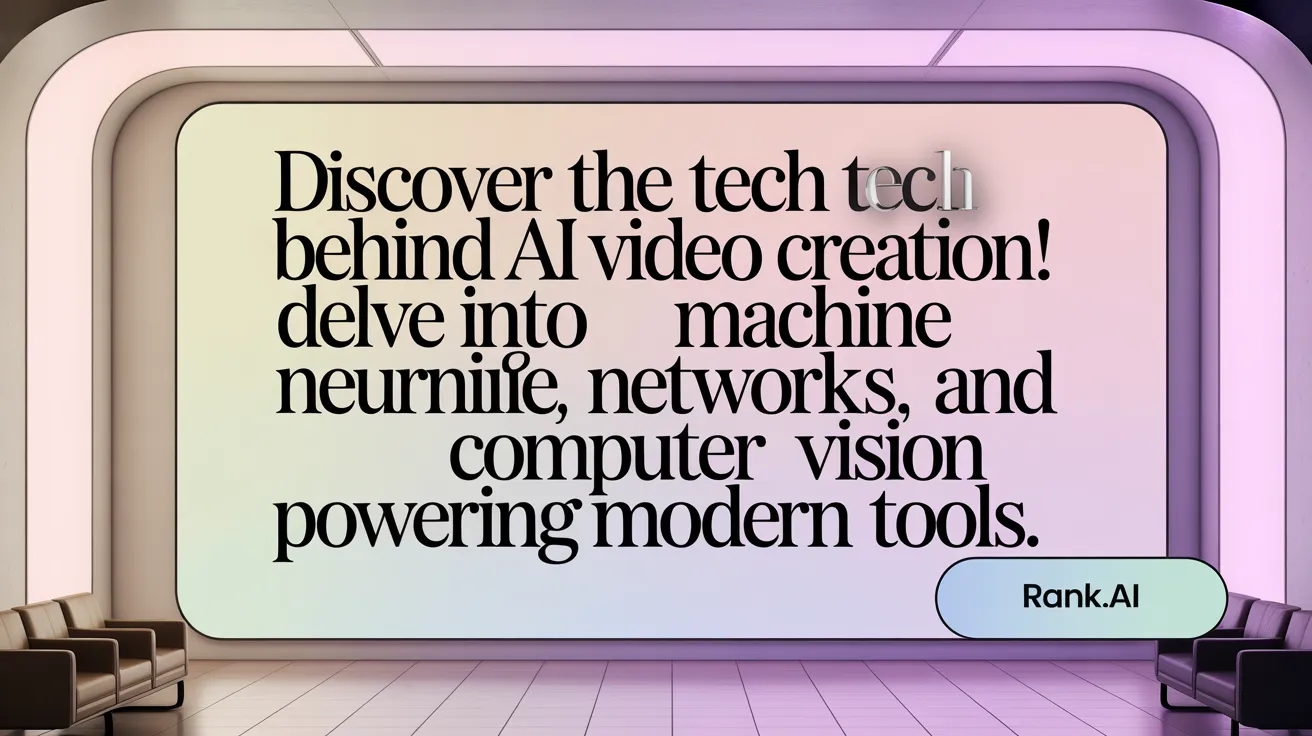
What technical aspects of AI technology support video editing, enhancement, and automation?
The backbone of AI-driven video editing and enhancement lies in a range of sophisticated technological methods. Machine learning algorithms play a vital role, enabling scene detection and intelligent trimming by analyzing visual and auditory cues to identify key moments and transitions automatically. These algorithms also support editing suggestions, helping creators refine their footage more efficiently (AI video editing).
Computer vision techniques are essential for object recognition and background removal. They allow AI tools to distinguish subjects from their surroundings, stabilize shaky footage, and even upscale older videos through super-resolution. These methods improve visual clarity and facilitate seamless compositing and editing tasks (AI video tools).
Neural networks underpin many enhancement features, such as super-resolution for increasing resolution without loss of quality, noise reduction to clarify audio and visual content, and style transfer to apply visual effects consistent with artistic preferences. These networks are trained on vast datasets to learn complex patterns, enabling high-fidelity corrections and aesthetic improvements (Adobe Firefly AI video generator).
Natural language processing (NLP) is used extensively for transcript generation, script analysis, and captioning. AI models can automatically transcribe speech, generate accurate subtitles, and facilitate voice-controlled editing commands, making the editing process more intuitive (automatic captions and transcription).
Automation extends across color grading, audio balancing, and scene transitions. AI-driven tools can adjust these parameters automatically to match desired styles or improve consistency, significantly reducing manual workload (Adobe Premiere Pro AI features).
Furthermore, AI facilitates real-time editing and interactive features, allowing creators to tweak content dynamically. This technological foundation opens creative possibilities for personalized content, instant edits, and collaborative workflows, all while making professional-quality production accessible to a broader range of users (AI video production benefits).
Behind-the-Scenes AI Technologies Enabling Efficient Video Production
AI has significantly transformed video production workflows by automating complex tasks and streamlining processes from start to finish.
One of the main technological pillars is the use of deep learning models such as generative adversarial networks (GANs) and neural networks. These models excel at visual synthesis, enabling the creation of realistic graphics, scene effects, and even entirely generated frames, reducing the need for extensive manual editing. For more on these capabilities, see Best AI video generator tools.
Natural language processing (NLP) plays a vital role in simplifying content creation. It allows AI to analyze scripts, generate storyboards, and suggest content, thus speeding up planning and pre-production. Tools powered by NLP can also produce subtitles, transcripts, or even auto-generate dialogue, enhancing accessibility and engagement. Related resources include AI video editing and transcription and InVideo script-to-video.
Computer vision techniques are central to scene detection, motion tracking, and object recognition. These enable automated scene changes, stabilize footage, and facilitate accurate tracking of moving objects or subjects. AI-driven scene detection accelerates editing by marking key moments and transitions, while motion tracking ensures seamless effects and overlays. See Adobe Premiere Pro AI features and OpusClip AI video clipping and editing for examples.
Cloud-based platforms and AI-powered real-time editing tools support remote collaboration, allowing teams to work simultaneously on projects with instant updates. These platforms often include AI features that automatically correct colors, balance audio levels, and tighten edits, significantly reducing manual work hours. For more details, check AI video tools for 2025 and AI video production benefits.
Another critical advancement is virtual avatars and text-to-video generation. These AI-driven tools can produce realistic digital characters or transform written scripts into fully animated videos, expanding creative options while minimizing production time. Explore Synthesia AI video platform and Free AI Script to Video Generator for this technology.
Overall, these behind-the-scenes AI technologies have made high-quality video production faster, more flexible, and accessible to a broader range of creators. For a comprehensive overview, see How to create videos with AI and AI video tools overview.
The Business and Marketing Edge: Benefits of AI-Powered Video Content Creation
AI-powered video content creation brings a range of advantages that greatly benefit marketing, social media, and enterprise applications.
One of the most notable benefits is the ability to accelerate production and streamline workflows. AI tools automate repetitive tasks such as script generation, scene editing, resizing videos for multiple platforms, and even voice cloning, which allows creators to produce polished videos in a fraction of the traditional time (AI video production time reduction, AI automates video editing).
Moreover, AI enhances content personalization and enables multilingual localization. By tailoring videos to specific audiences, optimizing for search engines, and supporting multiple languages, brands can effectively expand their global reach and increase engagement (AI avatars and voiceovers, multilingual AI video support).
Cost savings are another significant advantage. AI democratizes video creation by reducing the need for extensive technical expertise, expensive equipment, or large teams. This accessibility allows smaller businesses and individuals to craft high-quality content without inflated budgets (Cost of advanced video tools, AI reduces video creation time and costs).
Scalability is also improved with AI, as it provides tools capable of generating large volumes of varied content suited for different platforms and campaign goals. Whether for social media snippets, product demos, or corporate communications, AI ensures consistent quality and fast delivery (Scalable AI video creation, AI video editing software).
Finally, AI enhances viewer engagement, which can foster stronger brand growth. By enabling the creation of dynamic, personalized, and professional videos, companies can better connect with their audiences, strengthen brand awareness, and drive marketing success (Impact on marketing video creation, Drive engagement with AI clipping).
In summary, incorporating AI into video content creation offers unmatched speed, customization, savings, and scalability, transforming how brands communicate and innovate in competitive markets. For more insights, search Using AI for video creation.
Exploring Innovative AI Video Tools Shaping the Future
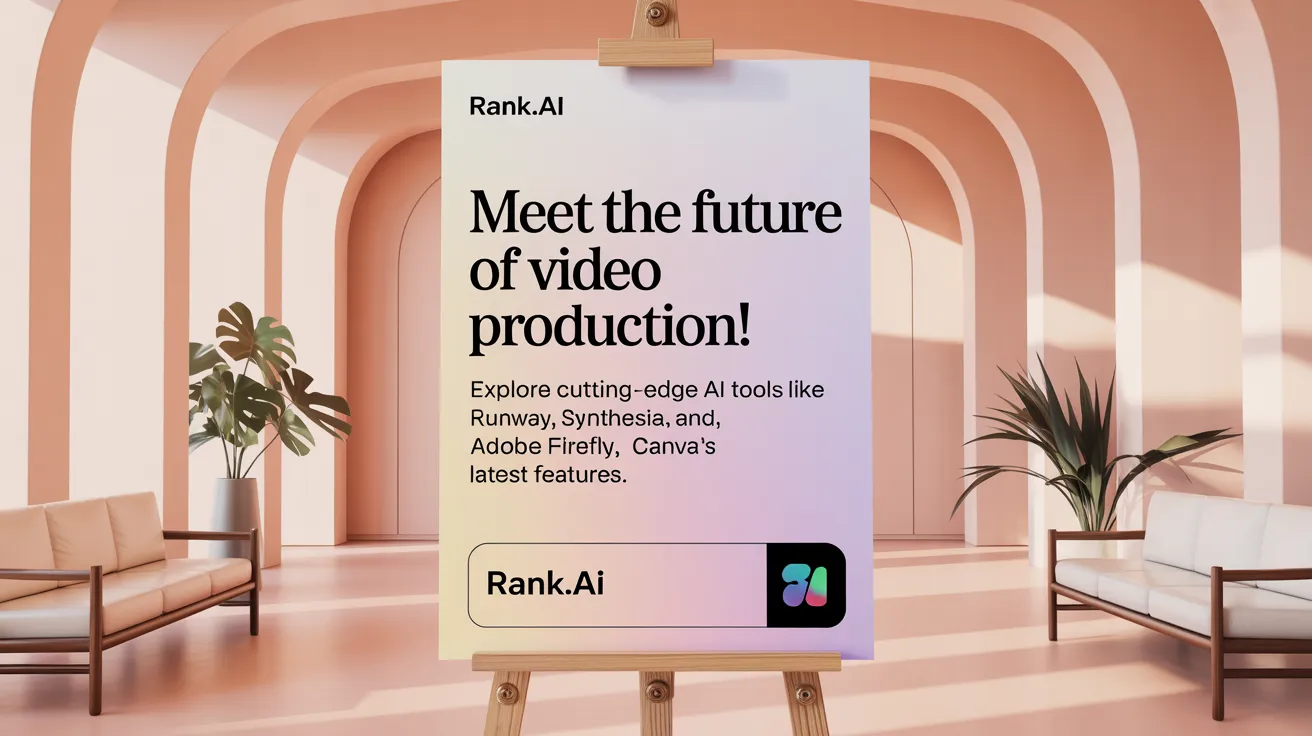
Runway’s Generative AI Capabilities and Advanced Editing
Runway stands out in the AI video creation landscape with its highly versatile generative tools. The platform offers features like Aleph, which enables editing videos by prompts such as changing angles, weather conditions, or props. This allows creators to produce high-quality, dynamic content without reshooting scenes. Additionally, Runway supports extensive editing options, including background removal, motion effects, and seamless scene transitions. Its advanced AI models can generate up to 1080p videos, and with its Gen 4 model, users can craft videos with complex camera movements, making it suitable for professional projects and creative experiments alike. Learn more about Runway Gen 4 features.
Synthesia’s Multilingual AI Avatars for Corporate Videos
Synthesia revolutionizes corporate communication with its realistic AI avatars that support over 140 languages. Users can create engaging, multi-language videos simply by inputting scripts, without the need for filming or voice recording. The avatars exhibit natural expressions and lip-sync accurately to the uploaded or generated scripts. This technology is particularly popular for training, onboarding, marketing, and internal communication videos, as it saves time and resources while reaching global audiences. Custom avatars can even be designed to match brand identity, providing a personalized touch to corporate messaging. Discover how to create with Synthesia AI Video Platform.
Adobe Firefly’s Image-to-Video Realism and Speed
Adobe Firefly brings high-fidelity image-to-video conversion into mainstream video production. It excels in generating cinematic-quality scenes from simple prompts or static images, adding motion, depth, and realism. Firefly is capable of creating detailed close-ups, natural landscapes, and even animated human faces with lifelike textures. Its user-friendly interface allows content creators to produce professional-grade videos rapidly—often within minutes—making it ideal for marketing, product visualizations, or cinematic effects. Its emphasis on realism and speed is reshaping how quick, impactful videos are produced. Explore Adobe Firefly video generation.
Canva’s Integration of Google Veo-3 for Text-to-Video and Avatars
Canva integrates Google’s Veo-3 technology to transform text prompts into engaging videos with synchronized audio. Users can generate 16:9 videos roughly 8 seconds long that include dialogue, sound effects, and background music. A unique feature is the ability to create talking head videos by uploading a photo or selfie, which then acts as an AI avatar narrating scripts in over 40 languages. The platform allows extensive customization through animations, stickers, and effects from Canva’s media library. This combination of features makes Canva a powerful tool for visual storytelling, quick content generation, and marketing campaigns. Learn more about Canva AI video generator and Google Veo-3 powered video creation.
OpusClip’s Automatic Clipping and Captioning for Social Media
OpusClip enhances social media content creation with its powerful AI-driven clipping and captioning features. The platform automatically extracts the most engaging moments from longer videos, generating highlights that can boost viewer retention. Its ReframeAnything AI technology resizes videos for various platforms while maintaining focus on moving subjects through object tracking. Additionally, OpusClip adds captions with over 97% accuracy, supporting multiple languages. Its ability to create short, captivating clips from longer content makes it invaluable for creators looking to maximize engagement on platforms like TikTok, Instagram, and YouTube. Check out OpusClip AI video clipping and editing.
Balancing AI Automation with Human Creativity and Connection
Limitations of faceless AI video tools on emotional connection
Faceless AI video tools, such as Big Motion explainer videos, InVideo script-to-video, and Captions AI tool, excel at producing quick, polished content without the need to show faces or record voices. However, they often fall short in establishing a deep emotional connection with viewers. These tools tend to lack the personal touch, warmth, and nuance that come from genuine human expressions and spontaneous interactions. As a result, audiences may find such videos to be less engaging or authentic.
Importance of personal presence and authentic voice
While AI can generate realistic avatars or clone voices, the genuine human presence remains vital. A real human voice and authentic tone can evoke trust and resonate more powerfully with viewers. Personal storytelling, genuine emotions, and spontaneous reactions are often what make content memorable. Even when using AI-generated avatars, blending human elements ensures the message retains sincerity and emotional depth. For more details, see Personal connection in videos.
Human oversight in editing and creative direction
AI tools can automate much of the video creation process, but human oversight is crucial to ensure the content aligns with brand values and emotional aspirations. Creators should actively guide the editing, color grading, and narrative flow. Human judgment helps in selecting the most impactful moments, adjusting tone, and avoiding the pitfalls of overly sterile or robotic outputs. Creative direction by humans guarantees storytelling that feels authentic and compelling. See AI video editing and Adobe Premiere Pro AI features for advanced AI editing tools.
Ethical and privacy considerations in AI video use
The use of AI-generated videos, especially those involving cloned voices or faces, raises ethical questions around consent, authenticity, and privacy. Creators and companies must ensure they have permission to use likenesses and voices. Transparent disclosures about AI-generated content help maintain trust. Responsible use of AI safeguards not only individual rights but also the integrity of the content. Relevant considerations are discussed in Faceless AI video tools and AI video content moderation.
Hybrid workflows combining AI efficiency with human storytelling
The most effective strategy balances AI efficiency with human creativity. AI can handle repetitive tasks, rapid editing, and content scaling, freeing creators to focus on storytelling, emotional nuance, and innovative concepts. For example, AI can generate multiple video drafts, while humans refine the narrative, add personal touches, and ensure authenticity. This synergy results in high-quality content that is both efficient to produce and emotionally engaging. Explore how AI video production streamlines workflows and AI video tools for content scaling and creativity to learn more.
Harnessing AI for the Next Era of Video Content
Artificial intelligence is redefining how video content is created, edited, and distributed, offering unprecedented tools that work quietly behind the scenes to empower creators and businesses. These AI tools unlock new creative possibilities while drastically reducing production times and costs. However, as automation advances, maintaining the human touch remains crucial to preserve authenticity and emotional resonance. By understanding the diverse platforms, technical innovations, and strategic applications detailed here, content creators can navigate this evolving landscape with confidence. Ultimately, embracing AI as a collaborative partner rather than a replacement brings about a new era of engaging, efficient, and accessible video storytelling.
Table of contents
Recent articles
Fresh insights on AI and SEO to help you stay ahead of the curve.


Ready to Improve
Your Rankings?
Use our free tools to get instant insights into your SEO performance and discover opportunities to rank higher

